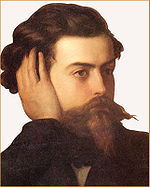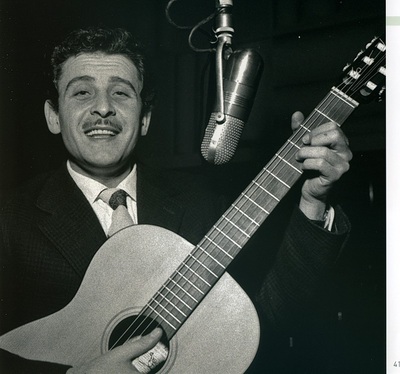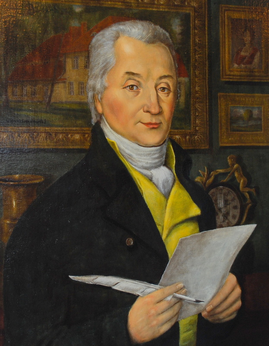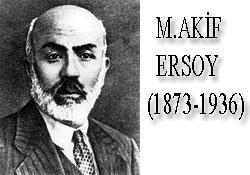music in our countries

CROATIA
"Lijepa naša domovino" (Our Beautiful Homeland) is the national anthem of Croatia. It is often referred to as just "Lijepa naša" ("Our Beautiful") in Croatia, which is also a phrase widely used as a metonym for the country.
The original lyrics were written by Antun Mihanović and first published under the title Horvatska domovina (Croatian homeland) in 1835. The author of music has not been indisputably determined although the late 19th century tradition suggests that it might have been the music amateur Josip Runjanin (1821–1878). It has not been known what the original form of the melody was because the first copy has not been recovered to this day.
Sad kada došla si
Sad kada došla si (Now that you’re here) is the song written and performed by Klapa Cambi and Bosutski Bećari.
Klapa Cambi is a Croatian vocal a capella group.
The group is from the old town of Split, and performs traditional songs of the coastal Croatian region - Dalmatia. They, like many other Croatian a capella bands, follow the ancient tradition of singing and performing, and are one of the most popular bands in their genre.
Bosutski Bećari is Croatian group, who sings traditional songs and play traditional instruments like „Tamburica“. The tamburica is made of three parts; body, neck and head. The body was pear-shaped until the middle of the nineteenth century CE, and was built by scooping out the log. Today they are mostly built in the way of the guitar and even the smallest, the bisernica, has a constructed box.
"Lijepa naša domovino" (Our Beautiful Homeland) is the national anthem of Croatia. It is often referred to as just "Lijepa naša" ("Our Beautiful") in Croatia, which is also a phrase widely used as a metonym for the country.
The original lyrics were written by Antun Mihanović and first published under the title Horvatska domovina (Croatian homeland) in 1835. The author of music has not been indisputably determined although the late 19th century tradition suggests that it might have been the music amateur Josip Runjanin (1821–1878). It has not been known what the original form of the melody was because the first copy has not been recovered to this day.
Sad kada došla si
Sad kada došla si (Now that you’re here) is the song written and performed by Klapa Cambi and Bosutski Bećari.
Klapa Cambi is a Croatian vocal a capella group.
The group is from the old town of Split, and performs traditional songs of the coastal Croatian region - Dalmatia. They, like many other Croatian a capella bands, follow the ancient tradition of singing and performing, and are one of the most popular bands in their genre.
Bosutski Bećari is Croatian group, who sings traditional songs and play traditional instruments like „Tamburica“. The tamburica is made of three parts; body, neck and head. The body was pear-shaped until the middle of the nineteenth century CE, and was built by scooping out the log. Today they are mostly built in the way of the guitar and even the smallest, the bisernica, has a constructed box.

ITALY
In 1847 Goffredo Mameli, a young student and patriot, wrote the text of our anthem called “The song of italians”. Michele Navarro, a musician from Genova, liked the poem very much and decided to write the music as it is now.
One of our most famous song is probably "Volare" by Domenico Modugno. It won the San Remo Festival in 1958 an as soon became famous all over the world.
Goffredo Mameli Domenico Modugno
In 1847 Goffredo Mameli, a young student and patriot, wrote the text of our anthem called “The song of italians”. Michele Navarro, a musician from Genova, liked the poem very much and decided to write the music as it is now.
One of our most famous song is probably "Volare" by Domenico Modugno. It won the San Remo Festival in 1958 an as soon became famous all over the world.
Goffredo Mameli Domenico Modugno

LATVIA
National anthem of Latvia "Dievs, svētī Latviju!" (God, Bless Latvia!). Words and music by Kārlis Baumanis. LTV (Latvian public broadcaster) start it's programming each morning with an anthem.
http://www.youtube.com/watch?v=Q8p0y5fZ9xQ
Himna
Mana dziesma" (My Song) written by Prāta Vētra (Brainstorm) frontman Renars Kaupers is only some years old but has already reached a hymn-like status on Song festivals
http://www.youtube.com/watch?v=mUX81sQLO-A
National anthem of Latvia "Dievs, svētī Latviju!" (God, Bless Latvia!). Words and music by Kārlis Baumanis. LTV (Latvian public broadcaster) start it's programming each morning with an anthem.
http://www.youtube.com/watch?v=Q8p0y5fZ9xQ
Himna
Mana dziesma" (My Song) written by Prāta Vētra (Brainstorm) frontman Renars Kaupers is only some years old but has already reached a hymn-like status on Song festivals
http://www.youtube.com/watch?v=mUX81sQLO-A

POLAND
The lyrics of our anthem were written by Józef Wybicki in 1797. It was originally meant to boost the morale of Polish soldiers serving under General Jan Henryk Dąbrowski's Polish Legions. "Dabrowski's Mazurka", expressing the idea that the nation of Poland, despite lack of independence, had not disappeared as long as the Polish people were still alive and fighting in its name.
The lyrics of our anthem were written by Józef Wybicki in 1797. It was originally meant to boost the morale of Polish soldiers serving under General Jan Henryk Dąbrowski's Polish Legions. "Dabrowski's Mazurka", expressing the idea that the nation of Poland, despite lack of independence, had not disappeared as long as the Polish people were still alive and fighting in its name.

ROMÂNIA "Wake up, Romanian" is the national anthem of Romania from 1990.Melodia anthem was composed by Anton Pann, and the lyrics and arrangement belong to Andrei Muresan (1816-1863), poet .This hymn was sung at each conflict in Romania, because the message of patriotism and freedom that it bears in it : https://www.youtube.com/watch?v=zTwgwEHiWm0
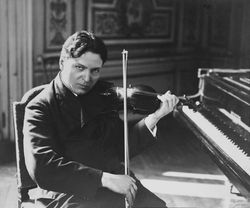
George Enescu was born in the village of Liveni, Romania (Dorohoi County at the time, today Botoşani County), and showed musical talent from early in his childhood. A child prodigy, Enescu created his first musical composition at the age of five. Shortly thereafter, his father presented him to the professor and composer Eduard Caudella. At the age of seven, entered the Vienna Conservatory, where he studied with Joseph Hellmesberger, Jr., Robert Fuchs, and Sigismond Bachrich, and graduated before his 13th birthday, earning the silver medal. In his Viennese concerts young Enescu played works by Brahms, Sarasate and Mendelssohn. In 1895 he went to Paris to continue his studies. He studied violin with Martin Pierre Marsick, harmony with André Gédalge, and composition with Jules Massenet and Gabriel Fauré. Many of Enescu's works were influenced by Romanian folk music, his most popular compositions being the two Romanian Rhapsodies (1901--2), http://www.youtube.com/watch?v=bZ1X8ieSjOM the opera Oedipe (1936), and the suites for orchestra. He also wrote five symphonies (two of them unfinished), a symphonic poem Vox maris, and much chamber music (three sonatas for violin and piano, two for cello and piano, a piano trio, quartets with and without piano, a wind decet (French, "dixtuor"), an octet for strings, a piano quintet, a chamber symphony for twelve solo instruments).
In 1923 he made his debut as a conductor in a concert given by the Philadelphia Orchestra in New York City. In 1935, he conducted the Orchestre Symphonique de Paris and Yehudi Menuhin in Mozart's Violin Concerto No.3 in G major. He also conducted the New York Philharmonic between 1937 and 1938. In 1939 he married Maria Rosetti (known as the Princess Cantacuzino through her first husband Mihail Cantacuzino), a good friend of the future Queen Marie of Romania. While staying in Bucharest, Enescu lived in the Cantacuzino Palace on Calea Victoriei (now the Muzeu Naţional George Enescu, dedicated to his work).
In 1923 he made his debut as a conductor in a concert given by the Philadelphia Orchestra in New York City. In 1935, he conducted the Orchestre Symphonique de Paris and Yehudi Menuhin in Mozart's Violin Concerto No.3 in G major. He also conducted the New York Philharmonic between 1937 and 1938. In 1939 he married Maria Rosetti (known as the Princess Cantacuzino through her first husband Mihail Cantacuzino), a good friend of the future Queen Marie of Romania. While staying in Bucharest, Enescu lived in the Cantacuzino Palace on Calea Victoriei (now the Muzeu Naţional George Enescu, dedicated to his work).

SPAIN
We have one of the easiest anthems to memorize. You only have to know: " na na na na na na" beause it does not have lyrics! Seriously now, it's called the "Marcha Real" and it is our anthem from century XVIII (except the years which we had a republic like system of goverment)
Anthem
Probably you think of Spain and think about "Flamenco" and "Bull-fighters". Actually we don't completly agree with that sterotype but we would like to show you a variety of "Flamenco" that it is very popular in our region. It is called "Bulerias"
We have one of the easiest anthems to memorize. You only have to know: " na na na na na na" beause it does not have lyrics! Seriously now, it's called the "Marcha Real" and it is our anthem from century XVIII (except the years which we had a republic like system of goverment)
Anthem
Probably you think of Spain and think about "Flamenco" and "Bull-fighters". Actually we don't completly agree with that sterotype but we would like to show you a variety of "Flamenco" that it is very popular in our region. It is called "Bulerias"

TURKEY
The İstiklâl marşı (English: Independence hymn) is the national anthem of Turkey and Turkish Republic of Northern Cyprus, officially adopted on 12 March 1921 - two and a half years before the 29 October 1923 establishment of the Republic of Turkey, both as a motivational musical saga for the troops fighting in the Turkish War of Independence, and as an anthem for a Republic that was yet to be established.
Penned by Mehmet Âkif Ersoy, ultimately composed by Osman Zeki Üngör, the theme is one of affection for the Turkish homeland, freedom, and faith, of sacrifice for liberty, and of hope and devotion, explored through visual, tactile and kinesthetic imagery as they relate to the flag, the human spirit and the soil of the homeland.
https://www.youtube.com/watch?v=oiwZYHhUXtw
The İstiklâl marşı (English: Independence hymn) is the national anthem of Turkey and Turkish Republic of Northern Cyprus, officially adopted on 12 March 1921 - two and a half years before the 29 October 1923 establishment of the Republic of Turkey, both as a motivational musical saga for the troops fighting in the Turkish War of Independence, and as an anthem for a Republic that was yet to be established.
Penned by Mehmet Âkif Ersoy, ultimately composed by Osman Zeki Üngör, the theme is one of affection for the Turkish homeland, freedom, and faith, of sacrifice for liberty, and of hope and devotion, explored through visual, tactile and kinesthetic imagery as they relate to the flag, the human spirit and the soil of the homeland.
https://www.youtube.com/watch?v=oiwZYHhUXtw

